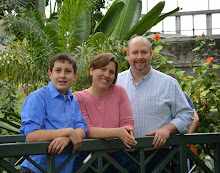Something old, something new, something borrowed…now I’m blue.
I started out the year reading two books about the instrument I love the most: the violin. First up was The Violin Maker by John Marchese (HarperCollins, 2007). I got it (almost) new via paperbackswap.com, and as soon as it arrived I tucked in. Fascinating! The author had a musical background, but really knew very little about stringed instruments when starting out. By shadowing a world-renowned luthier, Marchese follows the creation of one of these “magic boxes” from start to finish to first performance. I couldn’t put it down until I found out whether the violinist liked his new instrument…and I won’t give it away. You’ll just have to discover it for yourself. The book is accessible even if (perhaps especially if) you know absolutely nothing about violins.
That led me to read something old…a biographical novel from the fifties titled The Violin Hunter by William Alexander Silverman. I was amazed that our little library in Cadillac, Michigan, actually had a copy, tattered though it was. The subject of the novel is Luigi Tarisio, the man responsible for discovering over a thousand Cremonese stringed instruments in the mid-nineteenth century. Many of the world-famous Strads and del Gesus still played today were found by him on his travels through Italy, France, and Spain. Silverman does a good job of taking what we know about Tarisio (not a lot) and weaving it into a most enjoyable story. While it may be hard to track down a copy, it’s worth the trouble if you love expensive violins and a good story.
On a completely different note, just last night I stayed up late to finish The Mascot, a WWII memoir by Mark Kurzem (Viking, 2007). The subtitle tells it all: Unraveling the Mystery of My Jewish Father’s Nazi Boyhood. The book does read a bit like a mystery novel. Kurzem’s father, Alex, was five years old when his village in Belarus was "liquidated" of its Jews in 1941. Alex escaped and hid in the forest, but his entire family perished at the hands of the Latvian police, who were backed by the Nazis. That police brigade eventually found the boy wandering in the forest. Nobody suspected he was Jewish, so they adopted him as their mascot. He was dressed in a little Wehrmacht uniform and accompanied the brigade on patrol because he was supposedly good for the soldiers' morale. But that is only the beginning of Alex’s remarkable story.
At first it doesn’t seem possible that this could really happen to a child, and as the author researched to help his father discover his true identity, most of the “experts” he consulted discounted the story as a child’s faulty memories. Nevertheless, he persisted and eventually was able to accompany his father back eastern Europe where they could put all the jigsaw pieces together. So many seeming coincidences come together in the end to make for a satisfying read. I marveled at what my worldview could only interpret as divine Providence directing every contact, every scrap of information. Still, I’m left feeling sad when I think what evil mankind is capable of and how that evil can affect the life of a small child, robbing him of his family, his very identity, and haunting him into what should have been his golden years. The Mascot is not for the fainthearted, but it is a well-told story that deserves to be heard.
Saturday, February 13, 2010
Subscribe to:
Posts (Atom)
